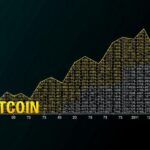Bitcoin ETF Inflows Demonstrate Correlation with Interest Rate Expectations
Recent developments in the cryptocurrency market indicate a significant correlation between Bitcoin ETF inflows and interest rate expectations, as evidenced by last week’s notable financial movements. On Friday, in conjunction with Federal Reserve Chair Jerome Powell’s speech at the Jackson Hole Symposium, investors allocated $252 million to Bitcoin ETFs. This event was part of a larger trend, with a total of approximately $506 million being directed toward these funds throughout the entire week, marking the highest weekly influx since late July.
During his address, Chair Powell signaled the potential for policy adjustments, which appears to have galvanized investor confidence and responsiveness to interest rate shifts. This sentiment was underscored by James Butterfill, Head of Research at CoinShares, who noted the pronounced sensitivity of Bitcoin inflows to Powell’s dovish comments regarding monetary policy.
The inflow surge on Friday resulted in the largest single-day net total since mid-July, reflecting the intricate dynamics of market psychology and monetary policy impacts. In contrast, the US-listed Ether ETFs experienced a decline, with net outflows totaling $45 million last week, further exacerbated by a difficult start for these funds in the market, which collectively reported losses of approximately $465 million.
As of the present moment, Bitcoin’s trading price hovers around $63,400, indicating a minor decline of 1.3% over the last day, yet showcasing a substantial increase of 8.5% from the preceding week. Concurrently, Ether is priced at about $2,720, revealing a slight drop of 1% within the last 24 hours but reflecting a 4% increase over the past week.
These fluctuations are indicative of a rapidly evolving landscape within the cryptocurrency sector, compounded by external economic variables and investor sentiment. The apparent connection between ETF inflows and interest rate discourse underscores the intricacies of financial markets, highlighting the need for investors to remain vigilant with macroeconomic developments.








Post Comment